Outbound gathers information on startup companies and matches them with sponsors who participate with the organization. It also conducts due diligence on startups within the broader Brazilian market to facilitate investment decisions. The result of the project was a landscape analysis of venture funding in that country and a recommendation on the most profitable direction forward for the organization.
By Colm Fay
In early September in Delhi, India, the William Davidson Institute at the University of Michigan, and Miller Center for Social Entrepreneurship at Santa Clara University launched “Closing the Circuit: Accelerating Clean Energy Investment in India.” The event included round-table discussions with enterprises and investors on how they might implement some of the ideas presented in the paper.
One theme that emerged is that the challenges facing enterprises in the clean energy industry in India and the lessons they are learning are not unique to either the clean energy industry or, indeed, to India. In fact, some of the findings from our research reflect patterns that can be observed in any nascent industry. While the context of providing access to energy in India has its own unique characteristics, what we know about how industries develop might help guide investment and provide some clues as to what might come next.
After interviewing several energy access enterprises in the Energy Access India (EAI) program – funded by USAID from 2015-18 and implemented by Miller Center and New Ventures India – we observed a pattern emerging in terms of how enterprises evolved. There were three distinct stages of development: an early initial focus on a compelling value proposition; a stage of vertical integration where a company takes on additional supporting activities; and, a stage of moving these activities outside the enterprise through outsourcing partnerships to specialize around the enterprise’s core competencies.
In the “early focus” stage, enterprises develop a value proposition that targets a specific pain point for a specific customer segment. Hopefully they’ve co-created this value proposition with those customers, and it is something that creates value for them. Enterprises will likely see some early success as the product precisely meets the needs of these customers and they have the ability and willingness to pay for it.
Once enterprises seek to grow beyond this stage, they may be addressing a different customer segment, or operating in different geographic regions where the value proposition they’ve developed doesn’t fit quite as well. This may require widening their offering, through the addition of a consumer financing facility, developing new distribution models, additional after-sales service, etc. In a developed industry, partners would exist to undertake these activities. However, in nascent industries such as the clean energy industry in India, these partners often don’t exist, and enterprises must do it themselves.
It’s helpful to understand why these partners may not exist in the early stages of an industry’s development. Providing inputs or services in these contexts often require the creation of “specific assets” – investments that have extremely limited and specific uses. For example, if there is only one vendor of household appliances serving a particular region of rural India, developing an entirely new distribution network for household appliances as a standalone business is unlikely to be a profitable business. At the price that the distributor would have to charge to cover their cost, it would be cheaper for the vendor to build this capability themselves.
However, enterprises often can’t continue to be experts in everything as they grow. For most enterprises, the next stage of growth is going to require focusing on their core competencies, executing at higher volumes that generate economies of scale and having partners optimized around providing inputs or supporting services. If the enterprise has been successful in demonstrating the possibility for commercial viability, it is possible that others have recognized the opportunity and have entered the market. Now providers of supporting inputs and services look at the market and see multiple potential clients and that mitigates the risk of their investments.
Simpa Networks is a great example of this type of evolution. The enterprise started out as a provider of solar home systems. As it developed its distribution network, it launched consumer financing products that enabled a greater number of customers to purchase the product. It also began providing a range of appliances that increased the use of energy, thereby increasing demand for its core product. Through this process, the enterprise has become an expert in understanding consumer needs and providing solutions to meet these needs through an extensive distribution network that reaches the last mile. Rather than replicating this integrated model everywhere, it now seeks to optimize its strategy around this core competency to become the leading distributor of household appliances to the last mile regardless of where the energy to power them comes from. In effect Simpa Networks is outsourcing the electricity generation component of its business. This kind of specialization only becomes possible when there is a sufficient number of energy providers in the market. Because they are focused only on electricity generation, and are serving smaller geographic areas, they are able to do so more efficiently than Simpa Networks can. This demonstrates another interesting twist – what may have been the subject of an enterprise’s early focus may not continue to be its core competency as it grows.
This evolution from early focus to vertical integration to specialization is nothing new. It is exactly how firms operate in nascent industries. While these models can provide guidance for enterprises and help inform their strategies, it is also important for impact investors and the development community to recognize these dynamics of how an industry matures. It can be tempting for these stakeholders to focus on finding the next new technology, the next business model innovation, or a new financing vehicle that will unlock sustainability and scale. What isn’t as obvious is investing in business to business enterprises across the value chain that facilitates specialization and optimization or improvements in the legal environment that make it easier to enforce contracts between partners. In our discussions with investors in the clean energy space in India, we noted that several are beginning to look at whether their investments are catalytic for the industry, as well as representing good investment deals.
This was a topic of a number of conversations at SOCAP 2018 in San Francisco in October. As part of the panel discussion “Moving from Good Impact Deals to Great Systems Change,” Clara Miller of the Heron Foundation described the importance of supporting efforts like the Sustainability Accounting Standards Board. Neil Yeoh of Echoing Green encouraged investors that wish to see greater pipeline, to also invest in the plumbing.
In “Closing the Circuit,” we also identify some broad categorizations of the Energy Access India (EAI) portfolio companies in terms of the business models they are pursuing. While the distinction between business models may be fuzzy, we saw three distinct patterns emerge; pure-play energy providers, complementary products and services and integrated productive use.
Pure-play energy providers are focused on the generation of electrons at volumes that are profitable. This may mean providing a combination of solar home systems, rooftop solar and solar pumps. These companies leverage economies of scale across these different customer segments to reduce costs and become commercially viable. For example, Argo Solar provides rooftop solutions for profitable customer segments including commercial and industrial customers. It also engages in government tenders for solar pumps in rural markets and drives economies of scale across both markets.
Complementary products and services enterprises focus on developing a basket of products, which may include both the generation and use of electrons. These companies leverage economies of scope to reduce costs and become commercially viable. This means that production of a second product can be done so more efficiently because the company is also producing the first product. Grassroots Energy (GRE), for example, is a biogas production company in the EAI portfolio. It uses animal waste to produce gas that is used as a backup energy source for mini-grids rather than diesel generators. To do this it needs to collect animal waste from local farmers. The residue that remains after the production of biogas, with some addition of nutrients, is an effective fertilizer. GRE can produce this fertilizer product much more efficiently than a standalone business because it already collects the waste and processes it through bio-digestion in the course of generating energy.
Integrated productive use enterprises provide access to energy, but also focus on promoting and facilitating productive use of that energy. This is typically required in contexts where ability to pay is low, and productive use of energy has economic benefits that increase customers’ ability to pay. Without productive use to drive up utilization of the energy generation assets, typically mini-grids, these businesses would not be viable. These models require deep learning about how such communities operate, their energy needs, and how to identify and nurture productive use applications. Companies implementing this model leverage economies of learning to reduce the cost of each subsequent implementation.
Mlinda is an example of this model. It installs mini-grids that provide a higher-quality and more reliable source of energy for rural communities in Jharkhand, India. It also invests significant effort in helping the local community to develop micro-enterprises, such as producing mustard oil, rice hulling and poultry production. Of course, this is only economically productive if there is a market, and so Mlinda also creates market linkages to enable the community to sell these products. As it replicates this model, Mlinda is developing the knowledge assets that will enable it to reduce the cost of community engagement over time.
These models and the associated economies of scale, scope, and learning might sound familiar to anyone who has taken an MBA strategy class. Hagel and Singer cover similar ideas in “Unbundling the Corporation.”
We spend a lot of time focusing on the unique aspects of working in resource constrained environments. Indeed, it is critically important to understand the inherent nuances. However, these examples demonstrate that despite the vast differences in context, some of the business principles we are familiar with in other industries can be observed and that creates the possibility that we might be able to look to history, and to other industries, to anticipate what might happen next in these markets. Further, it may help entrepreneurs, investors, funders and practitioners to gain a deeper understanding of what they should do next to help accelerate these industries to a point where they are mature, competitive and can attract sufficient commercial capital to become self-sustaining.
Colm Fay is a program manager leading WDI’s Energy Sector focus area.
Download PDF of the report

Before participating in WDI’s M²GATE Program, University of Michigan sophomore Jackie Spryshak said she had never met anyone from Egypt. Over eight weeks this summer, Spryshak worked with and got to know her teammates from Egypt as they collaborated on their winning social enterprise project as part of the M2GATE virtual exchange program.
On Nov. 14, her Egyptian teammates will travel to Ann Arbor for a pitch competition at the Ross School of Business where they will meet for the first time. In all, 12 students from the MENA region will travel to U-M – six from Egypt and three each from Morocco and Tunisia. Four of the U-M-based students come from the Ann Arbor campus and one attends the Dearborn campus. (Click here to RSVP to attend the event in person. It also will be streamed on Facebook Live. Click here to RSVP on Facebook.)
“I am so proud that our team worked so hard and I am thrilled to be able to meet these students in person,” she said. “I am in awe of the creativity and drive behind my teammates, and can’t wait to see them.”
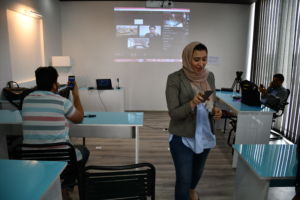
Spryshak and her teammates from Egypt were among the more than 500 students who participated in the WDI-organized program MENA-Michigan Initiative for Global Action Through Entrepreneurship (M²GATE), which paired undergrads from five Michigan campuses with peers in Egypt, Libya, Morocco and Tunisia to find entrepreneurial solutions to social challenges in the Middle East and North Africa (MENA) region. Working virtually, teams developed social entrepreneurship projects and accompanying pitches over an eight-week period with the help of instructors, mentors, and successful entrepreneurs from MENA and Michigan.
At the end of each of the three cohorts, the program hosted a virtual competition with judges naming winners based on scalable solutions featuring science, technology, engineering, and math – or STEM-based – innovations. The winning team from each cohort will participate in the pitch competition at U-M.
At the Nov. 14 event, each team will have about 5-7 minutes for their presentation before a panel of five judges that includes Ross School entrepreneurship professors and startup consultants. The event begins at 3 p.m. in the Ross School Colloquium on the sixth floor. It will be live streamed; details will be provided later. Light refreshments will be served at the conclusion, around 4:30 p.m.
Here are the videos from the three winning teams about their proposed social enterprises.
The Stevens Initiative is an international effort to build global competence and career readiness skills for young people in the United States, the Middle East and North Africa; it is funded by several public and private donors including the U.S. Department of State and the Bezos Family Foundation.
Over the past year, Poornatha has made great strides in spite of, and in some cases because of, COVID-19. Poornatha entered into a partnership with Indian Bank to provide online training to 1,500 micro, small and medium enterprise entrepreneur account holders of Indian Bank in 10 vernacular languages. The program was launched by the honorable Minister of Finance and Corporate Affairs of India. More recently Poornatha reached an agreement to provide training to 500 operators of retail electronic outlets. Poorantha has also launched its direct online training program – “Empower” to train entrepreneurs in the vernacular. The program received an overwhelming response of 42 entrepreneur registrations. Poornatha has also been investigating the best way to extend its Journey in Joy (JnJ) model of training across India. As a part of Michigan Academy for Developing Entrepreneurs (MADE), Poornatha’s activities have been supported by WDI and MADE in various ways including research on opportunities, assistance in development of programs and specific products to be used in these programs such as the business assessment tool. MADE also collaborated with Poornatha and University of Michigan’s School of Education to launch a study on Poornatha’s entrepreneurship learning modules, pedagogy and impact of the course on entrepreneurs through photo documentation.

Brand, left, and Kelterborn, center, record a podcast in Macedonia
WDI is partnering with the Center for International Private Enterprise (CIPE) to enhance the curriculum for an entrepreneurship training program for recent university graduates in Macedonia.
The program, first implemented in 2016 by the Youth Educational Forum (YEF) in Macedonia, sought to combat the high unemployment rate by engaging a core group of youth in entrepreneurial activity. YEF adapted an entrepreneurship curriculum WDI had previously developed for CIPE to the context of Macedonia.
In August 2018, CIPE asked WDI to review the existing curriculum and recommend ways to improve it, such as suggesting new activities and identifying any gaps. Kristin Babbie Kelterborn, a WDI senior project manager, and Stephen Brand, a faculty affiliate for WDI’s Entrepreneurship Development Center (EDC), traveled to the capital city of Skopje in early October to conduct a needs assessment from which they would base their recommendations.

The pair met with more than 30 individuals to gain a better understanding Macedonia’s entrepreneurship ecosystem. Based on the findings from the interviews, WDI will develop some modifications to the existing curriculum.
Kelterborn said that while the entrepreneurship ecosystem in Macedonia is in its early stages, it is quickly growing and that makes it an exciting time to be involved. She said there are many entrepreneurship initiatives that have emerged in the country over the past two years, many of which are led by motivated young people with creative ideas who want to contribute to economic growth in their country.
“But there is still a gap to fill in terms of entrepreneurship education,” she said. “This program will help fill that gap by providing young entrepreneurs with the knowledge, skills and experience necessary to launch a business in their country. Overall, it will help build a stronger environment that supports young people to launch innovative enterprises in Macedonia.”
During their trip, Kelterborn and Brand also met with CIPE and YEF to discuss their experience implementing the 2016 offering and talked about a strategy for strengthening the program. Next year, WDI will collaborate with the two organizations to redesign the curriculum with a focus on expanding it and embedding group-based and interactive activities.
Kelterborn and Brand also were guests on YEF’s podcast, “Skills That Pay the Bills,” hosted by Emilija Petreska. They talked about how young people can succeed as entrepreneurs in Macedonia, how best to support them and what they learned from their needs assessment visit to Macedonia and the goals of the YEF program. Listen to the podcast below.
The program in Macedonia is just the latest partnership between WDI’s Entrepreneurship Development Center and CIPE. WDI and CIPE are currently collaborating on a sustainable livelihoods project for refugees in Turkey (learn more here, here and here) as well as a university curriculum development project in Papua New Guinea (learn more here). Previously, they worked together on an entrepreneurship training program, as well as entrepreneur coaching and mentorship programs in Bahrain (learn more here and here).
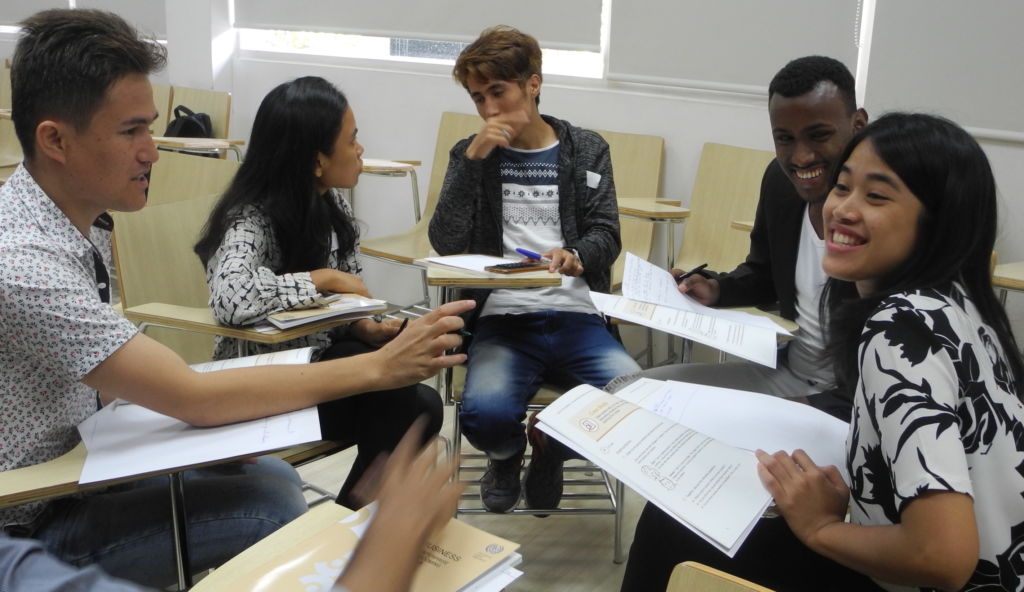
WDI’s Entrepreneurship Development Center (EDC) recently lent support and expertise for a pilot project designed to boost entrepreneurial thinking and problem-solving skills among young refugees and local youth in Jakarta, Indonesia.
EDC team members assisted by reviewing and providing input on 40 training modules to be used to teach entrepreneurship and other skills to young refugees and local youth in the country. The training program, Ready for Business, is organized by the United Nations High Commissioner for Refugees (UNHCR) and the International Labour Organization (ILO).
Over the next six months, approximately 100 youths as young as 16 will meet twice a week for three hours each time to learn how to become more self-reliant. There will be lessons about entrepreneurship, community-supported networking and social development, and strengthening one’s emotional well-being.
The EDC, housed within WDI’s Education Initiative, provides entrepreneurship education consulting to organizations and universities in emerging markets around the globe.
While most of the refugees in the UN program are from Afghanistan, several migrated from Somalia, Eritrea, Ethiopia, Yemen, Iraq, Myanmar and Sudan. The local youth live in Jakarta neighborhoods where the refugee shelters are located.
The Ready for Business training program is divided into five main themes, with emotional well-being and peaceful co-existence activities incorporated into each. The themes are:
At the end of the pilot program, which organizers hope to replicate elsewhere, participants will have developed a business plan for their idea. Aspiring entrepreneurs will be awarded business grants for the best start-up plans, and receive long-term support in the areas of enterprise development, psycho-social well-being, and peaceful co-existence between refugees and the host community.
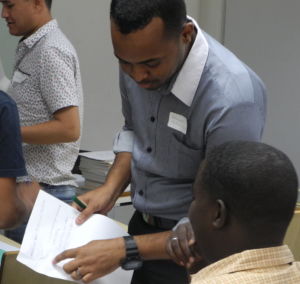
Sara Andersson, enterprise development technical officer at the ILO, said the organization was appreciative of WDI’s help in revising the modules.
“WDI’s suggestions and comments really helped us to take the modules one step further,” she said.
Amy Gillett, vice president of WDI’s Education Initiative, said WDI was pleased to work with the ILO on the entrepreneurship curriculum.
“The curriculum is very solid and incorporates many best practices in entrepreneurship education, including mini-case studies of entreprepreneurs operating locally and many hands-on activities,” Gillett said. “I am sure the graduates of Ready for Business will be well positioned to launch a sustainable business.”
The pilot training program in Jakarta was launched in early September. Andersson said the program is off to a great start and students seem motivated and excited to participate.
“There was a lot of interaction between local and refugee youth, and the materials seem to be just the right level for the students,” she said. “It was great to see how easily students adjusted to the methodology and started working independently without support in their groups. There was a lot of discussion and many students expressed afterwards that they really enjoyed the initial focus on their own dreams and visions.”
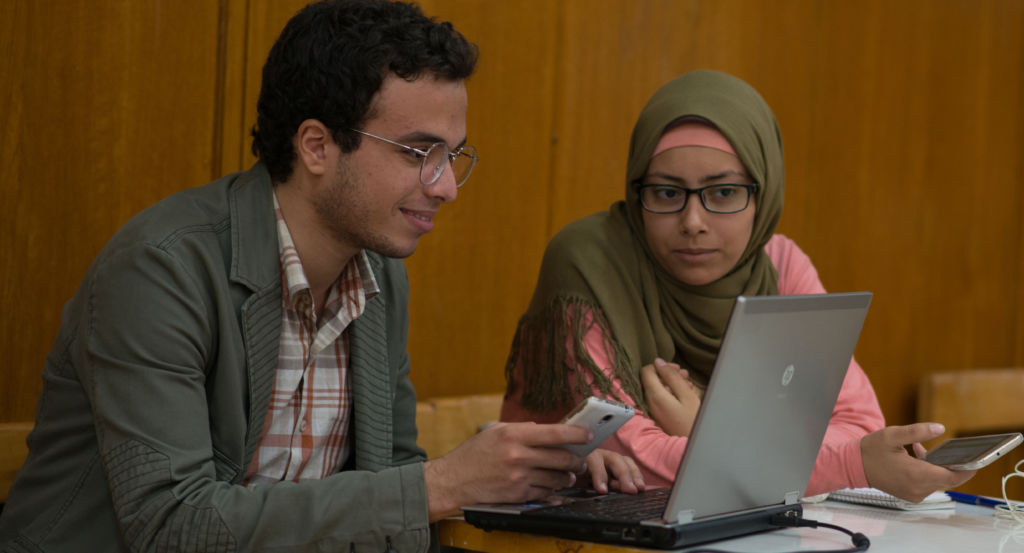
Abanoub Montaser Rodolf of Cairo recently was part of a winning team at a prestigious science competition in Indonesia. But he credits his success there to what he learned earlier in the spring from Ann Arbor.
Rodolf was one of more than 500 students who participated in the WDI-organized program MENA-Michigan Initiative for Global Action Through Entrepreneurship (M²GATE), which paired undergrads from five Michigan campuses with peers in Egypt, Libya, Morocco and Tunisia to find entrepreneurial solutions to social challenges in the Middle East and North Africa (MENA) region. Working virtually, teams developed social entrepreneurship projects and accompanying pitches over an eight-week period with the help of instructors, mentors, and successful entrepreneurs from MENA and Michigan.
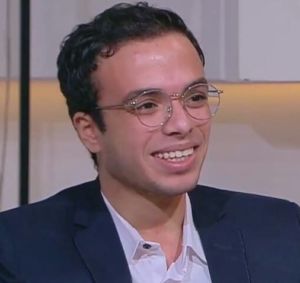 The program culminated in a virtual competition, and judges looked for scalable solutions that feature science, technology, engineering, and math – or STEM-based – innovations. Among the benefits of the program were that it increased cross-cultural understanding and equipped young people with the skills needed to thrive in a 21st century economy.
The program culminated in a virtual competition, and judges looked for scalable solutions that feature science, technology, engineering, and math – or STEM-based – innovations. Among the benefits of the program were that it increased cross-cultural understanding and equipped young people with the skills needed to thrive in a 21st century economy.
Rodolf, a student at Higher Technological Institute, was part of M²GATE’s second cohort and was on a team with three fellow Egyptians and two University of Michigan students – one each from the Ann Arbor and Dearborn campuses. His team, called the Sustainablers, developed an app that linked those looking to dispose of electronic waste with people interested in either buying or recycling it. The Sustainablers finished second out of 28 teams with their video pitch, which is below. (WDI will host a pitch competition with the winning teams from the three cohorts on Nov. 14 at U-M’s Ross School of Business.)
Last month, Rodolf was selected by Egypt’s Academy of Scientific Research and Technology as one of five delegates to represent the country at the 12th Asian Science Camp in Manado, Indonesia. The camp brings together talented, young scientists from 30 countries to share their ideas and projects in Asia and meet Nobel laureates and distinguished scientists. To be selected, Rodolf went through long screening and interview processes against top high school and college undergraduate students.
Rodolf credits M²GATE with preparing him for this tough evaluation exercise.
“The skills of thinking critically from diverse perspectives that I gained from M²GATE helped me to be different from the other applicants from all over Egypt,” he said.
https://www.youtube.com/watch?time_continue=27&v=boUSQb4YeOw
At the science camp, Rodolf was put on a team with students China, Japan, Thailand and Indonesia for a competition. They worked on a project to recycle plastic waste. The judges – including a Nobel laureate – chose the team’s project as the best.
Again, Rodolf credits the M²GATE program with giving him the tools to do well in the competition.
“I really appreciate the skills of collaborating and communicating and crossing cultures that I learned in M²GATE, which helped me so much to lead” my science camp team, he said.
Since his win at the camp, Rodolf has been interviewed by Egyptian reporters in print and twice on television. He said the M²GATE “changed my life to the best.”
He said he is thankful “for every single thing I’ve learned in this program because I really have benefited from everything I’ve learned.”
The Stevens Initiative is an international effort to build global competence and career readiness skills for young people in the United States, the Middle East and North Africa; it is funded by several public and private donors including the U.S. Department of State and the Bezos Family Foundation.
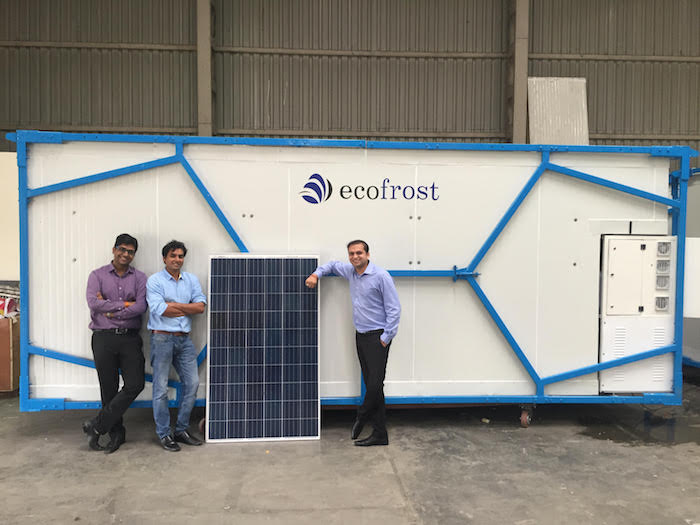
Ecozen Solutions, which has developed a solar powered cold storage system, is a company that participated in the research project. (Image courtesy of Ecozen Solutions)
WDI and the Miller Center for Social Entrepreneurship at Santa Clara University will mark the release of a new paper exploring what enterprises and investors have learned about energy access in India with an event on Sept. 6 in Delhi.
The paper, “Closing the Circuit: Accelerating Clean Energy Investment in India,” is based on the experiences of enterprises and investors involved in the Energy Access India (EAI) program. EAI is a three-year, USAID-funded program intended to narrow the gap between clean energy enterprises and investors. The program provides access to knowledge and mentorship that boosts enterprises’ investor readiness and by facilitating more funding to these enterprises.
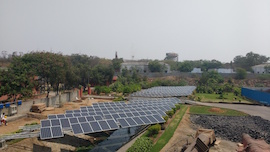
A Freyr Energy solar plant in India, one of the companies included in the research. (Image courtesy of Freyr.)
EAI program’s broader goal is to provide energy access to some of the approximately 300 million people in India who lack access by helping private energy enterprises develop innovative business models to achieve sustainability at scale. The program provided acceleration services to 26 energy enterprises in the country that represent a range of technologies and business models. The enterprises have achieved varying levels of success in growth, impact, and financial sustainability.
“Our collaboration with WDI helped discern key lessons from accompanying over 30 social enterprises focused on clean energy access,” said Thane Kreiner, executive director of Miller Center for Social Entrepreneurship. ”We hope this report will help clean energy enterprises connect with impact investors who want to increase energy access for India’s poorest people, and thereby transform their lives.”
The paper highlights opportunities for greater alignment between enterprises and investors. It also:
WDI’s Colm Fay, who heads the Institute’s Energy initiative and is lead author on the paper, said the Sept. 6 discussion at the Royal Plaza hotel in New Delhi will focus on what the EAI enterprises have learned about how to develop commercially viable models and strategies, as well as what patterns are emerging. Attendees will also talk about some of the paper’s recommendations to spur discussion.
“We’re hoping that the event attendees can take the recommendations we’ve developed in the paper, and determine the resources and partnerships required to put them into action, and the next steps to get there,” Fay said.
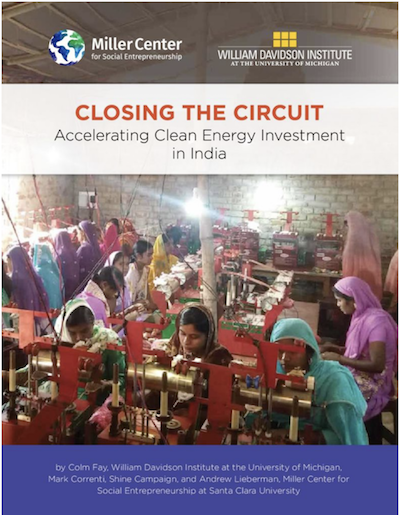 The research and subsequent paper on the EAI program is the first project of WDI’s fledgling Energy initiative. Fay said there are other current projects with graduate students at U-M’s School for Environment and Sustainability, U-M’s Erb Institute for Global Sustainable Enterprise and with faculty across the U-M campus.
The research and subsequent paper on the EAI program is the first project of WDI’s fledgling Energy initiative. Fay said there are other current projects with graduate students at U-M’s School for Environment and Sustainability, U-M’s Erb Institute for Global Sustainable Enterprise and with faculty across the U-M campus.
The initiative works with individuals and enterprises that are developing innovative approaches to power generation, and connects them with the expertise, knowledge, and tools to design commercially viable business models and build profitable enterprises. WDI’s Energy initiative works with University of Michigan faculty, students and other collaborators to increase access to energy in low- and middle-income countries, and to develop innovative models or technologies that can reduce reliance on non-renewable energy sources.
“Our goal with the Energy Initiative is to combine the technical expertise we have access to across the U-M campus, with WDI’s experience in business model innovation in emerging markets to support the development of enterprises that are commercially viable, while also increasing access to renewable energy,” Fay said.
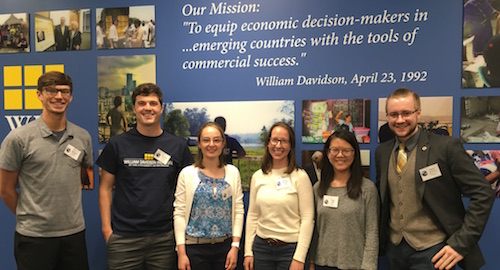
WDI’s 2018 summer interns before they set off on their voyages.
Over the years, WDI’s summer interns have faced unique challenges as they have conducted their work across the globe for the Institute and its partners. Impassable roads, extreme weather, the occasional wild animal. An active volcano can now be added to the list.
WDI intern Nadia Putri spent her summer in Bali, Indonesia working with East Bali Cashews on quality improvement projects, measuring the company’s impact on women and developing a U.S. market entry strategy. She also got an up close look at emergency preparedness.
“It was really beautiful, but a bit scary at the same time for someone who has never seen anything like it before,” she wrote of watching the sparks of lava and plume of smoke rise from the crater near where she was working. The cashew factory was outside the evacuation zone but management kept a daily eye on the volcano in case conditions changed. Earthquakes in the region have claimed nearly 400 lives during August.
Putri was one of six WDI interns working internationally this summer. Some, like Putri, have returned to the University of Michigan campus; others are finishing up their work and will be back in Ann Arbor soon. While overseas, the interns contributed to a blog to chronicle not only their work but also the experience of living in a foreign land. WDI has highlighted some of the work below and the full blog chronicling interns’ experiences is available here.
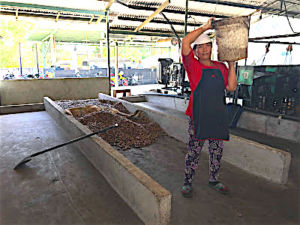
East Bali Cashews where Putri worked sources sustainably grown cashews from nearby smallholder farmers and processes them in a factory located in a remote village in one of Bali’s poorest regions. Since its launch in 2012, the company has integrated various social missions in and around its cashew processing operations, including community improvement and women’s empowerment.
Putri, a Ross School of Business MBA candidate, said factory workers were very supportive of her work and willing to explain how the company has impacted them. One employee recalled being hired after graduating from high school and is now in charge of 50 workers.
“At the factory, everyone is very welcoming and open to share their stories,” Putri wrote in her blog. “It’s especially humbling to see such high curiosity and willingness to learn from the factory employees. This serves as my daily reminder that (the) situation you grew up or lived in does not define who you could be.”
In Kenya, Andrea Arathoon, a School of Public Health graduate student, was tasked with helping a local maternity hospital reduce costs and increase patient volumes to achieve sustainability while also maintaining quality. One intervention Arathoon worked on for Jacaranda Maternity is a new outpatient care checklist for prenatal visits.
 The checklist is designed to improve patient processing within the outpatient clinic. This improved flow will reduce wait times and result in more efficient consultations, thus increasing patient volume and reducing costs, Arathoon wrote. She ensured the checklist followed the World Health Organization and Kenya Ministry of Health guidelines. The hospital’s doctors, nurses and administrative staff were consulted, and everyone was trained on how to properly use the new tool.
The checklist is designed to improve patient processing within the outpatient clinic. This improved flow will reduce wait times and result in more efficient consultations, thus increasing patient volume and reducing costs, Arathoon wrote. She ensured the checklist followed the World Health Organization and Kenya Ministry of Health guidelines. The hospital’s doctors, nurses and administrative staff were consulted, and everyone was trained on how to properly use the new tool.
“I am very excited about my summer project and the impact that it can have in improving maternity care for women and children in the country,” Arathoon wrote on the blog.
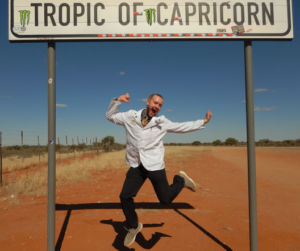
Across Africa on the Atlantic coast, Mason Benjamin is working in Namibia on pharmacy workforce development and hospital pharmacy practice. Benjamin, a College of Pharmacy graduate student, joined a collaborative project between WDI and the International Pharmaceutical Federation Hospital Pharmacy Section. The goal of the project, which includes the University of Namibia School of Pharmacy, is to increase the capacity of hospital pharmacists in Namibia through in-country diagnostics and technical assistance.
Benjamin has been traveling all across the country to visit hospital pharmacies in different regions to develop a landscape analysis of hospital pharmacy practices at both private and public hospitals. Before his site visits began, Benjamin attended the Medication Utilization Review In Africa (MURIA) conference, where he learned about pharmacy practice not only in Namibia but also across Africa.
“I was aware of how different the healthcare system in the United States might be from anywhere else in the world, but always felt that researching other systems online had its limits,” Benjamin wrote in the blog. “I much prefer to learn right from the source and in person, so I was grateful for the opportunity to ask questions to practicing pharmacists from over a dozen different African countries about how things worked in their setting.”
In India, the population of cities is expected to increase by 250 million people in the next 20 years, making employment a crucial need for the new transplants. Ross School of Business MBA student Chris Owen is working with MADE (Michigan Academy for the Development of Entrepreneurs) and its Madurai-based partner Poornatha, which is designing an affordable, world-class coaching curriculum for entrepreneurs in emerging economies. MADE was founded by WDI and U-M’s Zell Lurie Institute.
Owen is identifying best practices of existing coaching programs in India and other emerging economies, conducting a needs assessment of entrepreneurs in Madurai and developing a framework and training curriculum for how coaches will be identified, on-boarded and trained.
“By investing in strong local economies, India can address its dual-challenges of rapid urbanization and rising unemployment,” Owen wrote on the intern blog. “Indeed, for this reason, entrepreneurship in India – and the work of Poornatha – is becoming increasingly important.”
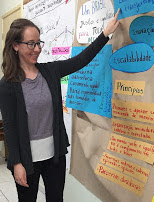 In Brazil, Rebecca Grossman-Kahn – a student at Ross and the U-M Medical School – is developing a tool to assess the social impact of the gender equality programs of Plan International’s Brazil office. Plan International has a long history of advocating for children’s rights but recently decided to focus its work in Brazil on promoting girls’ rights and equality. Gender roles in Brazil tend to be rigid and many girls stop studying in middle or high school to help with housework at home, Grossman-Kahn wrote on the blog. She attended a staff retreat to strategize on how to combat resistance from community members and organizations regarding Plan’s new focus on gender.
In Brazil, Rebecca Grossman-Kahn – a student at Ross and the U-M Medical School – is developing a tool to assess the social impact of the gender equality programs of Plan International’s Brazil office. Plan International has a long history of advocating for children’s rights but recently decided to focus its work in Brazil on promoting girls’ rights and equality. Gender roles in Brazil tend to be rigid and many girls stop studying in middle or high school to help with housework at home, Grossman-Kahn wrote on the blog. She attended a staff retreat to strategize on how to combat resistance from community members and organizations regarding Plan’s new focus on gender.
While at the retreat, a new World Bank report was released that showed girls who complete secondary education can expect to earn twice as much as those with no education.
“Studies like this can help get community leaders on board with Plan’s mission,” Grossman-Kahn wrote.
In Nepal, nearly two out of three working people are farmers. But the country’s rugged topography and lack of infrastructure makes it difficult to farm year-round despite a lengthy monsoon season. Additionally, in rural Nepal, only 5 percent of the population has reliable access to electricity. But the country has more than 300 days of sunshine, making it a perfect candidate for solar-powered agricultural services.
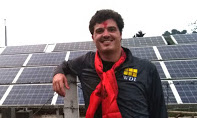 Matthew Carney, a dual degree student at Ross and the U-M School for Environment and Sustainability, spent the summer with the solar startup Ecoprise to help bring solar-powered agricultural services to subsistence farmers in the Terai region of Nepal that borders India. AgroHub, a pay-as-you-go service-based business model recently started by Ecoprise, provides access to solar-powered infrastructure for remote, underserved farming communities. These hubs provide farmers with access to equipment for irrigation, clean drinking water, food-processing and refrigerated post-harvest storage as a service.
Matthew Carney, a dual degree student at Ross and the U-M School for Environment and Sustainability, spent the summer with the solar startup Ecoprise to help bring solar-powered agricultural services to subsistence farmers in the Terai region of Nepal that borders India. AgroHub, a pay-as-you-go service-based business model recently started by Ecoprise, provides access to solar-powered infrastructure for remote, underserved farming communities. These hubs provide farmers with access to equipment for irrigation, clean drinking water, food-processing and refrigerated post-harvest storage as a service.
AgroHub has proved very successful for those farmers who have used it, allowing them to irrigate more land during the winter and monsoon seasons and reducing the use of diesel-powered water pumps that saves money. Carney’s task is to develop a plan to bring the service to farmers in western Nepal.
“Solar-powered agriculture presents an opportunity to raise the living standards of millions of rural Nepali farmers in a sustainable fashion,” he wrote. “It would be a shame to waste it.”
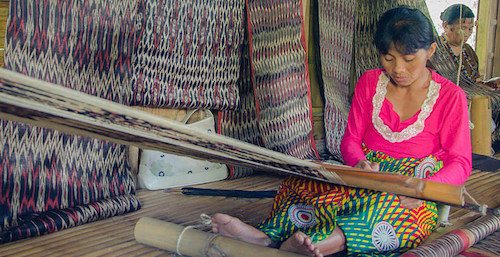

By Dan DeValve
The decision by small and medium enterprises (SMEs) in emerging economies to enter an international market is a key step in their maturation. For some SMEs, the move is necessary for survival in a competitive local economy, while for others it’s a logical next step for a successful and growing organization.
Kim Ian’s Dairy Delights is an excellent example of how a locally successful business in an emerging economy, in this case, the Philippines, approaches the decision to transition to the regional or international market. In 2015, I traveled to the Philippines and visited the town of Los Baños, home to many agribusinesses and located near the capital city of Manila. One of the town’s successful small businesses, Kim Ian’s Dairy Delights, had rapidly grown its production of goat milk-based cream cheese. It now faced a decision between scaling up the business to reach supermarket chains in Manila, or remaining in the much smaller niche market in Los Baños. The business owner recognized that expansion of the business would require reallocation of resources to pay for marketing and logistics, significant financial investment and risk, and a strategy for healthy growth of the company. Despite the risks, ultimately the namesake owner decided that their success hinged on a transition to the larger Manila market.
“Foreign market entry is considered as a key strategy to grow and survive over longer periods of time for SMEs,” according to a recent study on Bangladeshi SMEs in the International Marketing Review. In emerging economies with vibrant entrepreneurship sectors, such as the Philippines, the decisions made by these business leaders are instructive and can be illuminating for SMEs in other emerging economies.
While entering the export market has clear benefits, it is a major risk for a small business and can easily result in failure. As key factors of success, a recent study in the Journal of World Business stressed the importance of international business experience on the part of the SME owner, the strength of the home country’s institutional support for SMEs, and whether the SME is using the proper business model. If they have the advantage of institutional support, such as the local government or a business incubator, business owners can also utilize a “learning-by-exporting” model to make the transition, as highlighted in a previous NextBillion post.
A selection of three recent case studies published by WDI Publishing, part of the William Davidson Institute, highlights several issues commonly faced by Philippine SME owners as they consider a move to the international market. These three cases, which are available for free, were among a total of 94 published as part of a four-year project focused on training university faculty in the Philippines on how to teach and write business case studies. WDI implemented the project, in partnership with RTI International and the United States Agency for International Development (USAID).
A business case study is a documented analysis of a real-life business scenario, typically one in which the protagonist must make a crucial decision affecting the success of the business. As a teaching tool, cases provide students with “real-life” experience in decision-making and strategic thinking. As Philippine faculty engaged with a local business and identified a dilemma to feature in their cases, we noticed many focused on whether or not SMEs in the Philippines should enter international markets.
A common theme runs across these three cases. Each business is established in the domestic market with varying degrees of success, and each owner recognizes the advantages to be gained in exporting. Despite the potential benefits, the business owners must also consider the risks, especially adjusting an existing business model and scaling up production capacity to meet the demands of a new market.
Because the case studies were published in 2016 and 2017, WDI was able to review the various decisions ultimately made by these business owners and the ensuing results:
As this view inside three organizations showcases, SME owners can find it difficult to make the transition from domestic to international markets due to a lack of business experience. However, as illustrated in the cases of IPMC and REFMAD, government support for SMEs during this process is crucial. It can include assistance, such as the coordinating of trade fairs to help business owners make new connections, entrepreneurship training programs to provide business owners with the tools needed to scale a business, or even simple promotion of the business to potential customers.
As in the case of GFCP, if the business expertise, proper business model and ability to scale up production are absent, and the business has little to no external support, the idea of entering the international market remains only a dream.
Note: This article was written by Daniel DeValve, a senior project manager for grants management at WDI. The article originally appeared on NextBillion, which is managed by WDI.
Photo by I Travel Philippines via Flickr